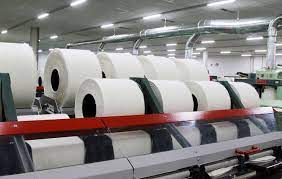High Plains of Texas cotton is getting attention in South India.
The cotton price situation is creating a lot of anxiety in the global textile sector. Particularly in India, which is the largest textile producing country, high cotton prices are being carefully watched, as it is having ripple effects across the economy and employment.
In an interesting twist to the cotton story, cotton from the High Plains of Texas is getting favorable consideration by South Indian textile spinners.
The spinning industry is heavily concentrated in the southern state of Tamil Nadu and the textile industry is situated in Coimbatore, Erode, and Thiruppur regions. Additionally, mills are situated in cotton-growing areas in Virudhunagar districts.
High prices coupled with a lack of consistent quality have made spinning industries look for alternatives to Indian cotton. Indian spinning associations have been pleading with the government to waiver the import duty of 10% on cotton.
A telephone call this morning with Mr. Velmurugan Shanmugam, General Manager of Jayalakshmi Textiles, based in Aruppukkottai in South India revealed that they are seriously looking at cotton from High Plains of Texas in their raw material mix. It is my understanding that another large mill has also booked an order of about 1000 tons of U.S. cotton, again showing interest in imported cotton.
According to Velmurugan, Jayalakshmi Textiles have booked 300 tons of High Plains cotton and the consignment is expected to arrive in Tuticorin port, which is near to their mills in 3-4 months. He hopes that by that time, the government will make a favorable decision on the import duty on cotton.
Many textile spinners are also exploring imported cotton. Indian spinners like Jayalakshmi Textiles have been using a small quantity of Giza cotton for high-quality yarns of 100-120s Ne. Jayalakshmi Textiles spins fine count yarns catering to sheeting and saree materials.
While landed price including tax of imported may be slightly higher than the price of domestic cotton, mills in India are also paying attention to quality and its consistency.
Indian cotton sector should pay attention to quality and delivery consistency and enable farmers to achieve high-quality standards.
Author: Dr. Seshadri Ramkumar
Ph.D., CText, FTI (UK), FTA (Honorary
Professor, Nonwovens & Advanced Materials Laboratory
Texas Tech University, Lubbock, TX, USA

